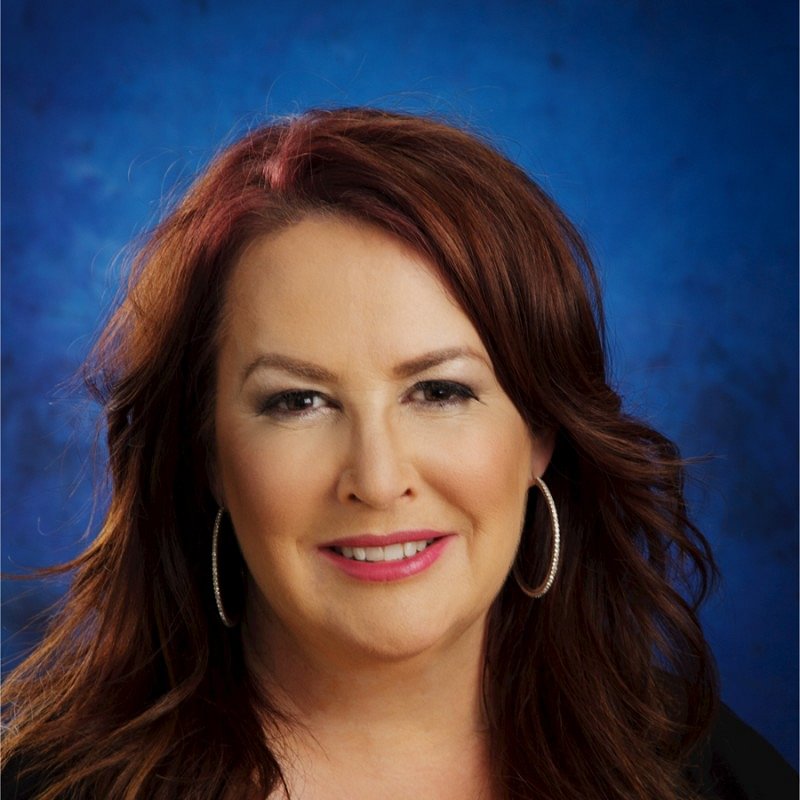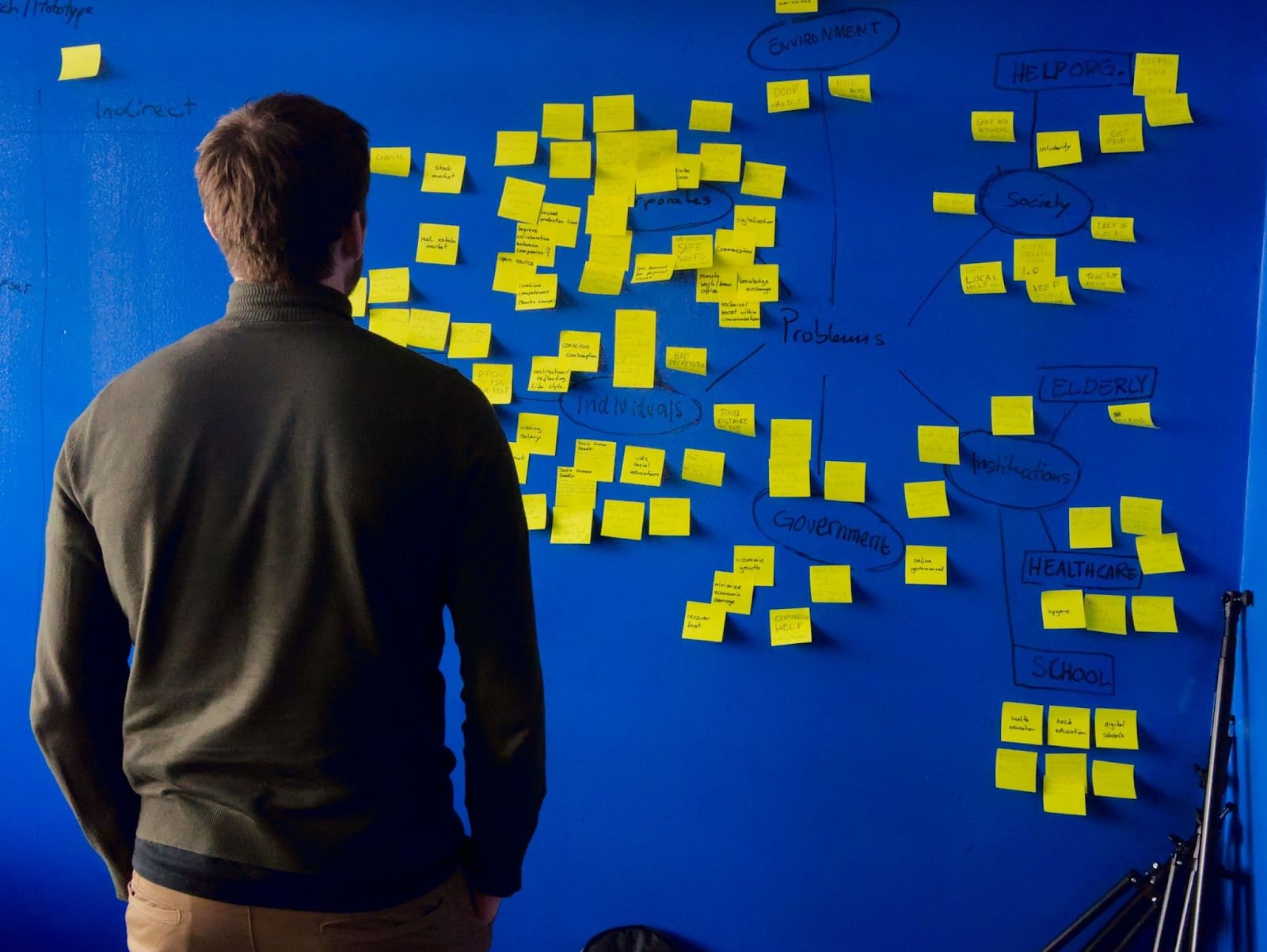
By Jim James, Founder EASTWEST PR and Host of The UnNoticed Entrepreneur.
Donna Loughlin joined me in the latest episode of The UnNoticed Entrepreneur from the middle of the Silicon Valley — San Jose, California. It used to be called “The Valley of Heart’s Delight” where, once upon a time, they grew apricots, apples, grapes, and more. Then they grew Apple computers. It’s considered the centre of innovation. And it’s why she was able to help launch over 500 companies.
In the episode, she talked about how entrepreneurs can get noticed even if they’re not Steve Jobs or Elon Musk and they don’t want to be on the front and upfront.
 Image from LinkedIn
Image from LinkedIn
Discovering Stories
Helping others get noticed, for Donna, is a really fun process. Since she was a child, she’s always been fascinated by people and their stories.
The first thing that she does is what she calls a napkin conversation. It’s where she and you as a client sit down and have a chat. You’ll go through a discovery process, looking for something that might seem ordinary but is actually extraordinary. Maybe, you’ve won a science fair when you were 10 years old or you were flying an aeroplane by the time you were 12. Perhaps, you’ve travelled the world and lived in Uganda, the Philippines, and parts of Asia by the time you were 13.
All of these incidents or opportunities would influence your lens through which you see the world. Taking you into a journey, looking back, and having some retrospect is an opportunity for you to find something — a thread that you don’t think about.
One of the things that she finds pretty common is curiosity. What was your curiosity as a child? Oftentimes, as an adult, people tend to kind of dismiss that curiosity — we put it in our back pocket.
Donna works with entrepreneurs who are food scientists bringing alternative products to the market (from dairy to meat products). What’s interesting is that they have memories in the kitchen with their grandmother or another family member. These clients didn’t realise how influential that was to their journey. Some clients had also been tinkering or making something from their local hobby store. Or as their classroom project, they’d loved a particular aspect of modeling or building something.
Putting that kind of curiosity and memories back upfront can be a cathartic experience for some. But what she really likes to do is to get you and her other entrepreneur clients to think out of the box. Don’t just think about the product or service that you’re bringing to the market. Think about the experience that you want to bring to the end-user, the partner, or the customer. And think about why you decided that you wanted to create your product or service to begin with. What was that kind of “it” factor for you to be chosen to be the one to take that product or service to the market and be the agent of change?
This is ultimately what she’s looking for: Why are you bringing this to the market? What personal benefit will it offer?
Building a Persona
There are a couple of story themes out there. There’s disruptive technology or innovation. There’s dramatic transition or turnaround story. For instance, someone was a school teacher then they became an entrepreneur; a doctor, then they wanted to bring a consumer product. What made that shift happen? Another theme is the personality and the individual.
 Image from Unsplash
Image from Unsplash
In the tech and innovation sector where Donna works, there are the likes of Steve Jobs and Elon Musk. However, not everybody is going to have that same persona.
She cited Debbie Fields who created Mrs. Fields cookies, which is a very common American chocolate chip cookie. For her, Debbie has a persona that’s very American and it’s quite endearing. She became the lady who lived down the street who brought you out a fresh plate of cookies. Imagine you’re having your biscuit with your tea but it’s your neighbour down the street or your grandmother who made them. It’s exactly the type of a really personal story that Debbie brought into her brand. Donna considers this very enduring.
When one can bring that personal experience — a fond memory or an incident in school or one that’s related to a milestone celebration with a family member — that’s when products become very personal and interesting. And through it, a persona can be built.
No One-Size-Fits-All Solution
A common question in terms of building stories for brands revolves around “when.” When or at what stage is the founder’s story important? How about the product’s or customer’s story?
According to Donna, it depends on who you’re having a conversation with.
With venture capital and investment conversations, the audiences absolutely want to know who the founder is and who the people in the room are. That often will dictate whether or not they’re going to invest in a company or not. The product and the product execution is oftentimes secondary. Because if they have confidence at the people in the room who are bringing a product to the market — people who have been there, done that — they’re likely to invest in the fact that they have experience.
If the product is me-too versus the challenger versus a disruptive product, that’s where you really need to get into the enigma of the customer mindset. Focus groups (whether they’re paid by big brands’ agencies or something you’ve accummulated on your own) provide feedback and are invaluable when it comes to knowing who your customer is and knowing who you want to talk to and target.
The question of which story to tell at a particular time really comes down to who you’re speaking to.
Sometimes, Donna will be in early-stage conversations where the founders, investors, and strategic partners are all in one room. In that situation, you need to make sure that you’re adjusting the conversation to the dialogue of who you’re trying to charm or bring into the conversation. This shows the need for multiple messaging.
Donna shared that she’s worked with a couple of companies for three to seven years (In an agency environment, this is already a good length of time). And the original and the launch stories that she had for these clients are sizably different from their stories today.
You can think of it as a closet of clothes. You’re going to have clothes that you wear year-round and you’re going to have clothes that you might wear seasonally. Depending on where you are in the world, your summer attire can even be your year-round clothes. If you’re living in the Philippines, for example, you won’t need a coat. But every once in a while, you might travel someplace and need one.
Look at your positioning as if it’s a wardrobe wherein you need to selectively put on the things that are going to fit for certain occasions. There’s no one-size-fits-all. You might need to take off and add on accessories and garments as needed, depending on the conversation at your hand.
Strategies that Work
Donna’s firm has helped over 500 companies. One of the tools and strategies that she likes to do is having fireside chat conversations with the C-suite — the founders (if they’re still with the company), the executive team, or the leadership team — at least, on a quarterly basis. It’s important to know exactly how sales are and how’s the engagement with customers and strategic partners — any of the good, the bad, and the ugly that’s happening.
 Image from Unsplash
Image from Unsplash
The more access and insight she has into these things, the more effective she can be. She doesn’t want to be in a crisis scenario; she wants to be on the preventative side. There are times when something doesn’t work as advertised or when customers are disgruntled. But you need to be in front of those conversations than simply reacting.
It’s vital to know the things that can shift or change — everything from the supply chain to big-box companies taking a lead on things that might be sold online. Consumer awareness and behaviours also change. A Zoomer and a Millennial shop very differently than a Gen X and a Boomer. In understanding those markets, you can change and adjust the conversation to fit the different markets.
The other thing that works really well, according to Donna, is bringing in that same founder and leadership team into the narration discovery process — not just during a one-time launch but several times in a year.
Together with them, she looks at the story themes that worked and recalibrates them and comes up with new themes that could work better ‚ because creating a story for the BBC is very different from writing a story that could potentially appear on Vanity Fair, Road & Track, or Financial Times. Sharing the publications she reads a lot, Donna said that Wired is helpful for entrepreneurs and it’s great for innovation and tech. She also loves Entrepreneur magazine. She also looks at the columns and entrepreneurial sections of the BBC and Financial Times.
There are a lot of great resources online, including podcasts like The UnNoticed Entrepreneur as she cited. This strategy is about being able to look for things that are going to allow entrepreneurs to constantly be exactly what they tend to be: entrepreneurial.
When she formed her business 20 years ago, she didn’t actually create it to become an entrepreneur. She created it because she couldn’t find an agency that she wanted to hire when she was still working on the corporate side. The shift in her career was, “Okay, I’m not finding what I’m looking for. Therefore, I’m going to create it.” And this one is a pretty common theme among entrepreneurs.
From Being Acorns to Unicorns
During the podcast, Donna also talked about how some companies are acorns while others are unicorns. There’s been a lot of talks and books written about the unicorn or the billion-dollar companies. These are the Googles and Teslas of the world.
However, Donna works with the younger, earlier-stage companies and entrepreneurs. She thinks of it as planting seeds and being able to build a foundation. When you plant a seed, you start with building the roots. Then you got to water and nurture it. You need sunlight. And you need to talk to it. If you plant an acorn, as it begins to grow, it will eventually become a majestic oak.
She looks at the power of the unicorn as being the companies and entrepreneurs who are deeply passionate and rooted into the conviction of who they are, bringing their product or service to the market. But guess who hangs out underneath that majestic tree? The magic unicorn.
She works with clients across the globe and if she has a visual representation, she’d see these unicorn seeds planted all over the world. Harvesting these majestic oak trees, there comes new ideas, approaches, thoughts, and theories. What she does is to sit underneath them and kind of procure and get ideas the dispute a galloping unicorn. She likes working with the hungry early-stage companies that really want to make a difference. And sometimes, it’s the acorns that become unicorns.
 Image from Unsplash
Image from Unsplash
There’s a lot to be said about planting a really strong foundation. And it involves looking at everything that she’d discussed in the episode — from customers to products; from your innovation and engineering to your operations.
Helping Entreprenuers Become Entrepreneurial
People like Donna are typically curious. As a former news reporter herself, she’s always asked the question, “Why?” Typically, to every “why,” there is a “because I was told so.” But for her, one of the responsibilities that communicators have is to help entrepreneurs become entrepreneurial — because, oftentimes, they forget why they even set up to start the journey.
This especially seems to be the challenge as an organisation gets bigger. When the team gets bigger, the focus can become diluted.
When asked about her advice for entrepreneurs who are dealing outside of their home markets (e.g. someone who’s selling an internet-based product), Donna pointed out that you need to be very localised. You need to understand the psychographics and demographics of who you’re selling to. This is common marketing.
But besides that, you also need to ensure that your language is localised. Looking back at Mrs. Fields and her cookies, it’s an American story. It doesn’t mean anything to British kids growing up. Hence, you have to be able to localise and be empathetic.
Think about what is happening within a cultural set. For instance, the thing with Millennials and Zoomers is that they are values-driven. They have a very different approach than Gen Xers.
Donna emphasised that you have to be really considerate in bringing products to a market. You don’t say, “Oh, you know, the market will accept it or embrace this.” It needs to be customisable. It needs to be thoughtful.
On Getting Noticed
In the early phase of Donna’s business (which has been around for 20 years now), she would sit down to write a book. Then, she got a little stuck. She didn’t really want to be isolated and alone in a room. Writing a new story doesn’t seem like a lonely journey. But writing a book is a little bit of a lone ranger.
This is when she decided to create a podcast called “Before IT Happened.” It’s a podcast to bring visionaries to the future that they imagine. A lot of it is about tech and innovation but she’s also had amazing people who are doing breakthrough things in different markets — from science to health to airspace.
 Screengrab from Before IT Happened
Screengrab from Before IT Happened
For her, it was an opportunity to go back to her journalism and reporting roots; to create stories that might be said in a conference or at a counter in a diner or a bistro that you can’t afford going for various reasons. She went through a whole process of just looking for some amazing entrepreneurial people whose stories she could showcase in the format of a podcast. And it has been a great vehicle for conversations, meeting companies and clients to work with in different categories that she hasn’t thought of (She worked a lot in transportation, robotics, and artificial intelligence. However, she hasn't done anything in food and beverage).
In this aspect, her podcast has brought in a whole new opportunity for her. Now, she actually has the brainwaves to sit down and work on the book, which will be focused on how can entrepreneurs bring authentic stories to the market.
Another platform that she thinks is really effective is speaking at universities and being involved in mentoring the next generation. And last but not the least, she cited internships and inspiring the next generation of intern to choose communications, journalism, or public relations as a profession. She calls this as one of the components of her advocacy that she’s really proud of.
To learn more about Donna, you can find her on LinkedIn. She’s also on Instagram where you can get the latest information on her podcast episodes and upcoming guests.
This article is based on a transcript from my podcast The UnNoticed Entrepreneur, you can listen here.
Cover image by Etienne Girardet on Unsplash

